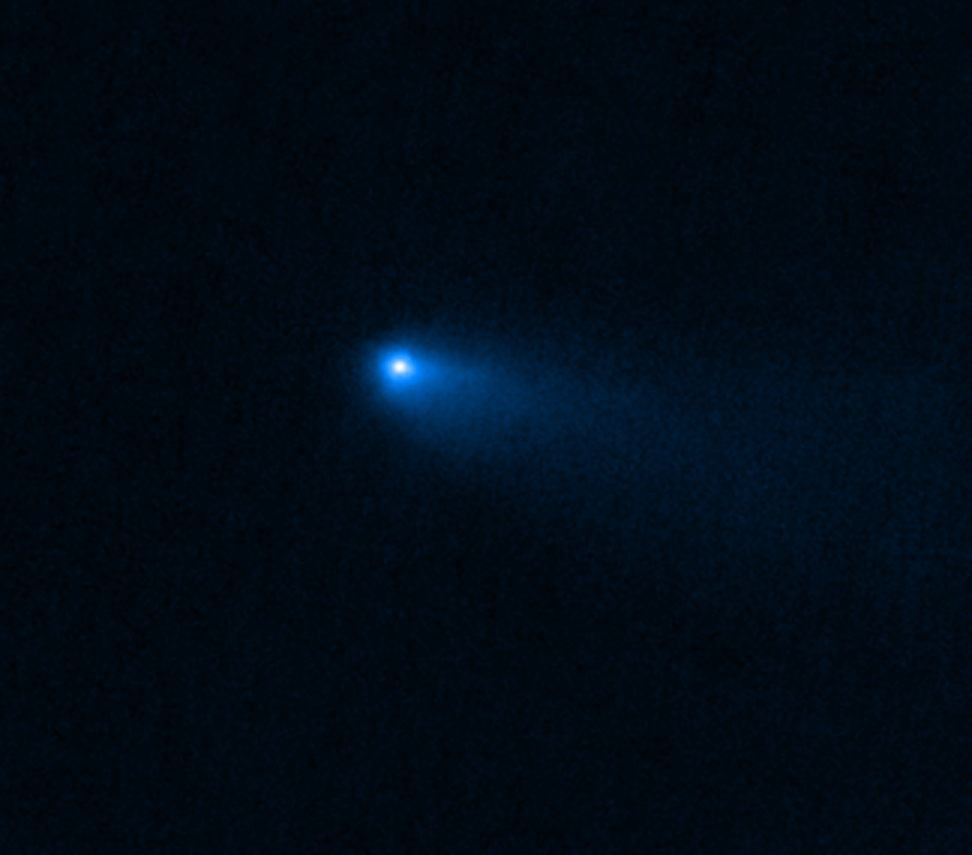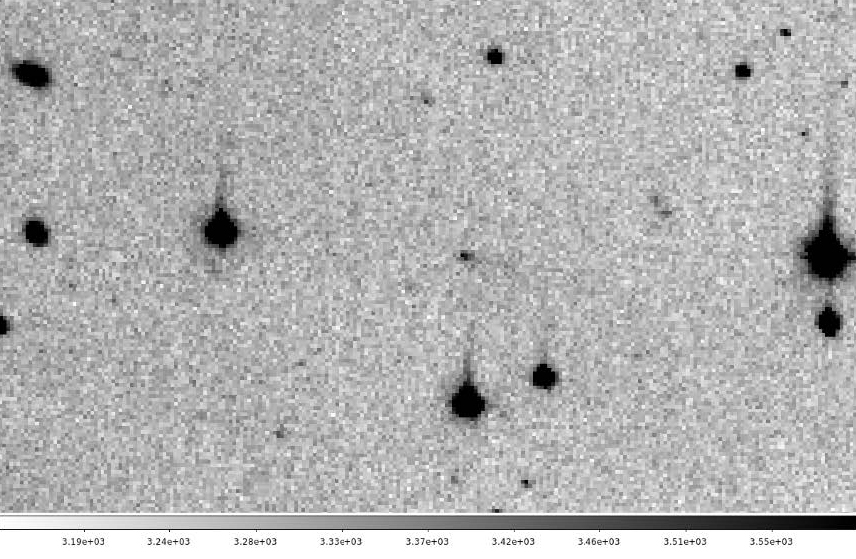Webb Telescope Discovers Water in Main-belt Comet
On Oct. 24, 2005, SPACEWATCH® observer Mike Read discovered a main-belt comet using the SPACEWATCH® 0.9m telescope on Kitt Peak mountain. Now, astronomers using the James Webb Space Telescope's Near-Infrared Spectrograph instrument, have discovered water vapor around that very object, Comet 238P/Read. This observation marks the first time that a gas – specifically water vapor – has been found around a comet in the main asteroid belt, indicating that water ice from the primordial solar system can be preserved there. However, the successful detection of water comes with a new puzzle: unlike other comets, Comet 238P/Read had no detectable carbon dioxide.
Comet Read is a main belt comet – an object that resides in the main asteroid belt but which periodically displays a halo, or coma, and tail like a comet. Main belt comets are a fairly new classification, and Comet Read was one of the original three comets used to establish the category. Before that, comets were understood to reside in the Kuiper Belt and Oort Cloud, beyond the orbit of Neptune, where their ices could be preserved farther from the Sun. Frozen material that vaporizes as they approach the Sun is what gives comets their distinctive coma and streaming tail, differentiating them from asteroids.
Scientists have long speculated that water ice could be preserved in the warmer asteroid belt, inside the orbit of Jupiter, but definitive proof was elusive – until Webb. But the missing carbon dioxide was a bigger surprise. Carbon dioxide generally makes up about 10% of the volatile material in a comet that can be easily vaporized by the Sun’s heat. The science team presents two possible explanations for the lack of carbon dioxide. One possibility is that Comet Read had carbon dioxide when it formed but has lost that because of warm temperatures. Another is that Comet Read may have formed in a particularly warm pocket of the solar system, where no carbon dioxide was available.
The next step is taking the research beyond Comet Read to see how other main belt comets compare.
The research is published in the journal Nature (Kelley et al., May 15, 2023): https://rdcu.be/dcBbV.
 Image of 238P/Read captured by the NIRCam (Near-Infrared Camera) instrument on NASA’s James Webb Space Telescope on September 8, 2022. It displays the hazy halo, called the coma, and tail that are characteristic of comets, as opposed to asteroids. The dusty coma and tail result from the vaporization of ices as the Sun warms the main body of the comet. Credits: NASA, ESA, CSA, M. Kelley (Univ. of Maryland). Image processing: H. Hsieh (Planetary Science Inst.), A. Pagan (STScI)
Image of 238P/Read captured by the NIRCam (Near-Infrared Camera) instrument on NASA’s James Webb Space Telescope on September 8, 2022. It displays the hazy halo, called the coma, and tail that are characteristic of comets, as opposed to asteroids. The dusty coma and tail result from the vaporization of ices as the Sun warms the main body of the comet. Credits: NASA, ESA, CSA, M. Kelley (Univ. of Maryland). Image processing: H. Hsieh (Planetary Science Inst.), A. Pagan (STScI)
 Discovery image of Comet 238P/Read taken with the SPACEWATCH®.0.9m telescope.
Discovery image of Comet 238P/Read taken with the SPACEWATCH®.0.9m telescope.

